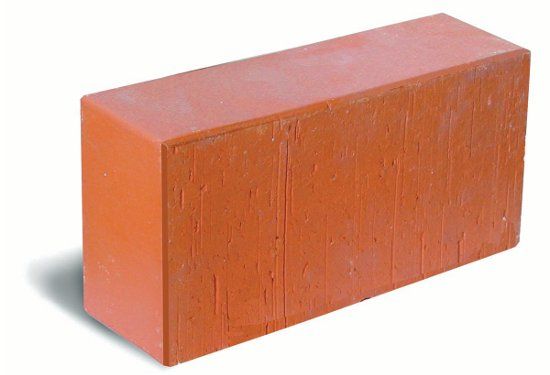Search
Login
Brick red, production, application, how to choose
We continue a detailed analysis of the most massive building material of brick. In the previous article, we examined the properties and characteristics of silicate bricks, followed the process of their production and found out some important nuances that must be considered when buying and using products. Today, the second most popular type of brick is next in turn: red brick, with summer cottage construction perhaps even more in demand than silicate, since its scope is slightly higher. Only to call such a brick we will correctly ceramic.
Content
- Ceramic brick
- Characteristics of ceramic bricks
- Types of Ceramic Brick
- Ceramic Brick Production video
- Ceramic brick application video
Ceramic brick
Maintaining geometric identity with silicate brick, red differs in the manufacturing method. It is made from clay, which is crushed, mixed and molded into briquettes. Then the product undergoes drying and firing processes, which give it the properties of a stone.

Since the drying conditions must be optimally maintained, the homogeneity of the components plays an important role, so clay should be mainly of the same composition, but there are few such deposits, besides geologically clay in the earth is layered, each layer has a different structure and composition, which forces manufacturers to carefully monitor for the conditions of mixing different types of clay. This leads to a significant increase in the cost of production. Like any product, ceramic brick has its advantages and disadvantages. The benefits include:
- the high degree of wear resistance of the brick perfectly resists the influence of the environment, including severe frosts that are characteristic of our climate
- high strength comparable to lightweight concrete
- low water absorption for ordinary bricks 10-14%, and for some types (for example, clinker) up to 3%, which allows the use of products in high humidity
- great strength red brick withstands pressure above 15 MPa
- environmental friendliness in production mainly natural components are used that do not harm either the human body or the environment
- wide range - in the photo of red brick you can see a wide variety of products used for most types of general construction and finishing works.

The disadvantages of ceramic bricks include the relatively high price for facing types, as well as possible differences in shades due to mixing batches, which requires additional inspection and verification upon purchase.
Characteristics of ceramic bricks

In Russia, the sizes of red bricks (however, and silicate too) are determined by the so-called normal format of NF. This format assumes a size of 250x120x65 mm. In more rare cases, but nevertheless fixed by GOST, the dimensions are 1.4 NF, in use one and a half bricks, 2.1 NF double.

It is worth noting that the size does not differ exactly 1.5 or 2 times, it is important to pay attention to this so that there are no errors in the calculations. Bricks of 0.7 and 1.3 NF are rarely used. Dimensions affect the price of red brick, the cost of the cheapest product cannot be lower than 7 rubles apiece. Face and figured red facing bricks, of course, are more expensive, the price of some samples reaches 35 rubles apiece. Another important characteristic of a ceramic brick is its weight. A hollow single red brick weighs 2.5 kilograms, a solid one of the same size 3.8 4 kilograms.
Types of Ceramic Brick
The most commonly used types of ceramic bricks include:
ordinary red solid brick

full or hollow front brick with a smooth and even front

facing hollow brick, including small ones, used for decoration

special brick clinker made by a special technology with the use of extreme temperatures during drying and firing, which greatly increases its durability

The correct front ceramic brick should be made of clay, extracted as much as possible fine fraction with a constant composition of minerals, then its structure will be even and smooth. Recently, the so-called Estonian brick has become very popular for decorating the facades of stoves and fireplaces, it is ideally smooth, and sometimes with a unique pattern, which gives the building an originality.

Ceramic Brick Production
Red brick production technology includes the following steps:
- clay preparation
- production of working mass
- molding
- drying
- burning
The whole process of manufacturing red ceramic bricks is clearly shown in the video
Ceramic brick application
Ceramic bricks are usually used for the construction of load-bearing walls, various external and internal partitions, one-story and multi-story buildings and structures, filling voids in cast concrete structures, laying foundations and retaining walls, the inside of chimneys, industrial and domestic furnaces, with the exception of the combustion chamber , which is made of special refractory bricks. Almost all stoves and fireplaces in our country houses are made of red brick.

It is also popular among summer residents during the construction of fences. When purchasing ceramic bricks, you must carefully monitor its quality and buy products only from reliable manufacturers that have the appropriate licenses, including for the development of clay deposits. Products must have a certificate of quality.





